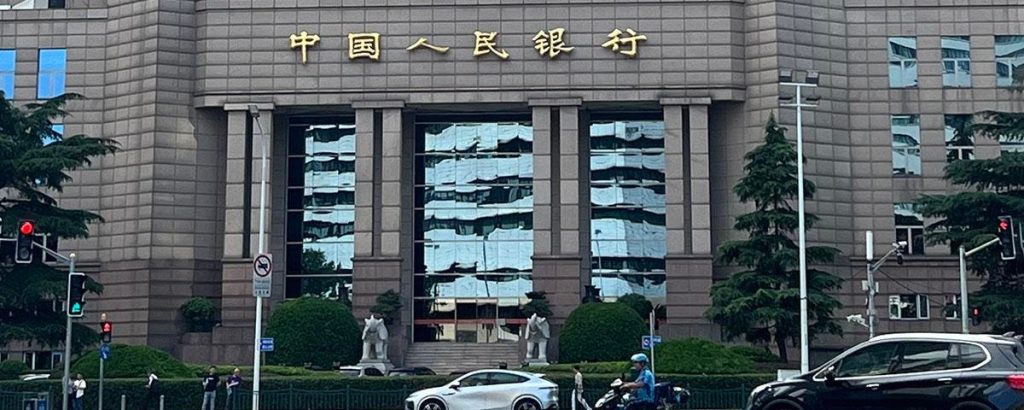Key News
Asian equities were mostly lower following last week’s tough going though Hong Kong managed a gain. Thailand was closed for Asarnha Bucha Day, which is one of the most important events in the Buddhist calendar commemorating the occasion of when Buddha delivered his first sermon, according to Google.
The People’s Bank of China (PBOC) made a surprise cut to the seven-day, reverse repo rate, lowering it from 1.8% to 1.7%. This is the rate for the standing lending facility, which is a PBOC to bank loan rate. Separately, but equally surprising, the central bank also cut the 1 and 5-year loan prime rates (LPRs) from 3.45% to 3.35% and from 3.95% to 3.85%, respectively. The 5-year LPR determines the mortgage rate in China, which could lead to refinancing.
I clearly didn’t get the memo that the Third Plenum was a disappointment. Instead, I highlighted the positive language from the post-Plenum Q&A press conference held with reporters. Today’s news is not coincidental, as the policy support and the amplification of that support is increasing in advance of the Politburo meetings next week, where actual policies will be announced.
On Sunday, the CPC Central Committee published the succinctly titled “Resolution of the Central Committee of the Communist Party of China on Further Deepening Reform Comprehensively to Advance Chinese Modernization”. “Common Prosperity” was mentioned only one time, marking a potential policy shift.
It is worth noting that China’s government extended tariff exemptions on “certain US goods” until February 2025, an olive branch. Meanwhile, China and the Philippines made some progress on their South China dispute.
Maybe I’m not the only one who noticed these positive developments. The Hang Seng and Hang Seng Tech indexes gained +1.25% and +2.10%, respectively, though on light volumes. Hong Kong was led higher by the most heavily traded stocks by value, which were Tencent, up +2.53% on the 5th day of net strong buying, Meituan, which gained +3.23%, energy giant CNOOC, which fell -0.24%, Alibaba, which gained +1.29% despite the Gray Lady, i.e. New York Times, stayed dark with an article on a “criminal billionaire” who happened to invest in Ant Group, and Xiaomi, which gained +4.24%. Mainland investors bought a healthy net $472 million worth of Hong Kong-listed stocks and ETFs via Southbound Stock Connect, including Tencent and the Hong Kong Tracker ETF.
Mainland markets could not advance without the help of the National Team, as their favorite ETFs saw normal volume as mega and large caps struggled. The STAR Board, the growth factor, and technology all outperformed due to their prominence in the Third Plenum’s policy document. CNY was off small on the rate cut. Things could get interesting with the Politburo meeting next week and then Q2 financial results the week after!
The Hang Seng and Hang Seng Tech indexes gained +1.25% and +2.10%, respectively, on volume that decreased -8.41% from Friday, which is 90% of the 1-year average. 313 stocks advanced while 153 declined. Main Board short turnover declined -20.73% from Friday, which is 97% of the 1-year average, as 19% of turnover was short turnover (Hong Kong-listed short turnover includes ETF short volume, which is driven by market makers’ ETF hedging). Growth outpaced value. The top-performing sectors were Technology, which gained +2.81%, Communication Services, which gained +2.33%,and Health Care, which gained +2.31%. Meanwhile, Materials fell -0.56%. The top-performing subsectors were technical hardware, pharmaceuticals, and software. Meanwhile, food & beverage, basic materials, and business and professional services were among the worst-performing subsectors. Southbound Stock Connect volumes were moderate as Mainland investors bought a net $472 million worth of Hong Kong-listed stocks and ETFs, including moderate net buying of the Hong Kong Tracker ETF and Tencent.
Shanghai, Shenzhen, and the STAR Board diverged to close -0.61%, -0.10%, and +0.34%, respectively, on volume that decreased -1.92% from Friday, which is 80% of the 1-year average. 2,390 stocks advanced while 2,428 declined. Growth and small caps fell less than value and large caps. Healthcare and Consumer Discretionary were the only positive sectors, up +0.44% and +0.20%, respectively. Meanwhile, Energy fell -1.98%, Consumer Staples fell -1.84%, and Materials fell -1.25%. The top-performing subsectors were power generation equipment, software, and autos. Meanwhile, oil & gas, liquor, and energy equipment were among the worst-performing subsectors. Northbound Stock Connect volumes were moderate with moderate net buying in Zijin Mining, small net buying in QFEC and Foxconn. Meanwhile, CITIC was a moderate net sell, and Zhongji Innolight and Sungrow were small net sells. Treasury bonds rallied. CNY and the Asia Dollar Index were off versus the US dollar. Copper and steel fell, again.
Upcoming Webinar
Join us on July 24th, 2024 at 10 am EDT for:
China Q2 Review: Insights From On The Ground
Please click here to register
Join us on Thursday, August 8th at 1 pm EDT for:
Overview of Hedgeye’s Proprietary Risk Range™ Signals & A New ETF To Help Manage Risk In US Equities
Please click here to register
New Content
Read our latest article:
Revisiting Hong Kong: Optimism Still Improving Even As Rally Gets Tested
Please click here to read
Last Night’s Performance
Last Night’s Exchange Rates, Prices, & Yields
- CNY per USD 7.27 versus 7.27 Friday
- CNY per EUR 7.91 versus 7.91 Friday
- Yield on 1-Day Government Bond 1.33% versus 1.38% Friday
- Yield on 10-Year Government Bond 2.25% 2.26% Friday
- Yield on 10-Year China Development Bank Bond 2.31% versus 2.33% Friday
- Copper Price -0.92%
- Steel Price -0.35%
Read the full article here
















